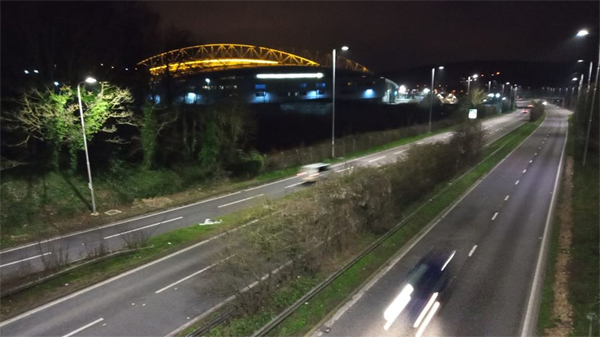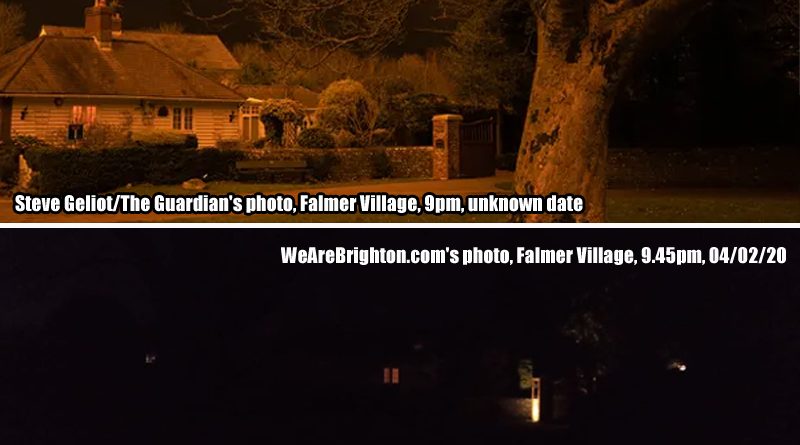Amex Stadium light pollution – real problem or fake news?
Brighton and Hove Albion have taken a bit of a kicking in recent weeks from the environmental lobby. Apparently, the Amex Stadium is responsible for light pollution which is keeping residents awake, killing insects and birds and preventing astronomy from taking place.
The orange glow which surrounds the Amex at night is a result of artificial lights being used on the pitch. These lights help the grass grow and ensure the playing surface is pristine and safe for use by Premier League players. They play an important part in trying to keep a world class facility in world class shape.
A petition set up by local artist Steve Geliot has however called on the club to turn off its lights at night. So far, it’s gained over 9,000 signatures and received national media attention through The Guardian and BBC Five Live among others.
Mr Geliot claims in his petition: “Lights and heaters are used all night long to help the grass grow but they are so badly designed that the consequential light spill is the worst incident in a hundred square miles.”
“This is having a devastating impact on wildlife, particularly insects as well as destroying the night sky for hundreds of thousands of people, causing distressing impacts on well being, and preventing astronomy and night photography.”
Mr Geliot ignores the fact that the Amex is surrounded by six lanes of heavy traffic on the A27 and two university campuses, housing thousands of students within 1960s concrete monstrosities which are probably full of asbestos.
Not to mention the fact that students aren’t exactly known for their reliable sleep patterns, meaning lights from said buildings are often left on all night.
Both the University of Brighton and the University of Sussex campuses have 3G pitches which remain floodlit until 11pm. There are further light pollution contributors next to the Amex Stadium at the headquarters of Southern Water and the Virgin Active gym.
The Guardian article in particular features a lot of nonsense. In it, Mr Geliot says that he has photographed the orange glow of Amex Stadium light pollution from the Long Man of Wilmington, some 11 miles away from Falmer.
Most ridiculous of all is the photo that The Guardian use of a house in Falmer Village, complete with the caption “Falmer Village in the South Downs, pictured at 9pm when the lights were on at the Amex stadium Photograph: Steve Geliot”.
Not only does the house in question back onto the A27 – hardly in the middle of the idyllic South Downs – but the photo itself appears to have been filtered by Mr Geliot or The Guardian to such an extreme that the red glow of the picture makes it look like it has been taken on Mars.
In order to see whether Mr Geliot was correct and Falmer does now resemble something from the Red Planet, we decided to pay a visit ourselves.
The following photos were all taken between 9.30pm and 10.30pm on Tuesday 4th February with no editing or filter applied. Here’s what we found.
Amex Stadium Light Pollution in Falmer Village
We’ve already touched upon the wonderfully ludicrous photo that Mr Geliot sent to The Guardian. The house in the photo is positioned in the north east corner of the village where South Street and East Street meet, so about as far away as you can get from the Amex.
The picture itself was taken next to the pond, looking towards the house with a large tree on the right. On our visit to Falmer, we found ourselves in virtually the same position as Mr Geliot with a time difference of around 45 minutes – his photo was taken at 9pm, ours at 9.45pm. There was just the slight difference in the amount of light pollution which Mr Geliot claims to have witnessed…
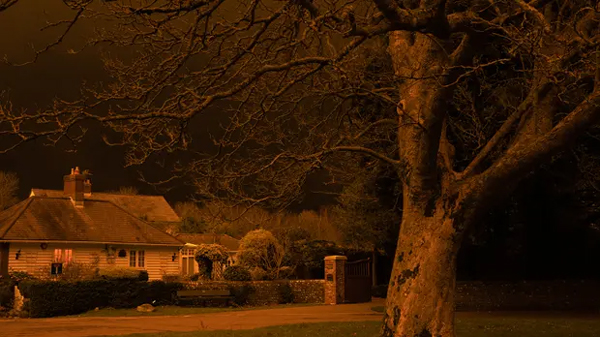
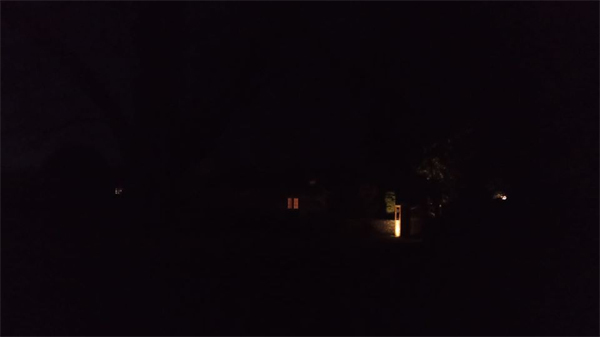
In our photo, you might just be able to make out the tree on the left. The pillar from the driveway is illuminated and one of the windows is on.
The contrast in the two pictures is so ridiculous that it has to cast serious doubts on just how much Mr Geliot or The Guardian have manipulated the image to suit their cause.
There doesn’t seem to be any plausible way that a property on the edge of the village that was shrouded in complete darkness on our visit could be bathed in a glow more orange than Simon Jordan’s skin after a particularly heavy sunbed session.
That isn’t to say that light pollution from the Amex doesn’t impact on Falmer Village at all. The photo below shows the view from Park Street in the west of village, looking directly across to the Amex.
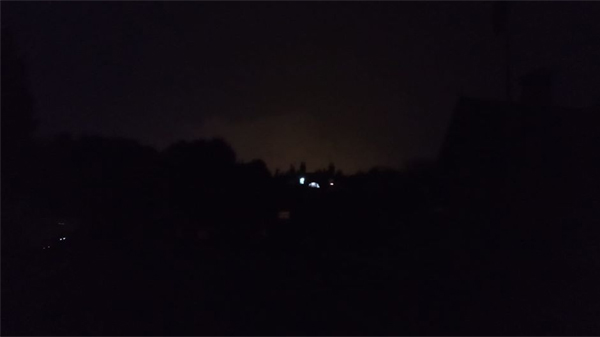
Here, there is a very noticeable orange glow appearing from the stadium. If you happened to live in those houses, then it might be possible that you’d be impacted by light pollution.
But enough to keep people awake or have a distressing impact on their well being, as Mr Geliot claims? Given that the 24/7 hum of vehicles travelling along the A27 at 70mph can be heard in the village, we’d say the road is more of an issue than the Amex.
Amex Stadium Light Pollution seen from far away
When it comes to light pollution from the Amex Stadium impacting on the view from far away, then sadly Mr Geliot has a point.
There’s no way we were traipsing all the way to the Long Man of Wilmington to test his claim of the stadium being visible from 11 miles away, but we did have a look from two vantage points of various distances.
The first was from the B2123 Falmer Road which runs from the A27 to Woodingdean. It’s the place where that wonderful view of the stadium nestled into the rolling hills of the South Downs comes from.
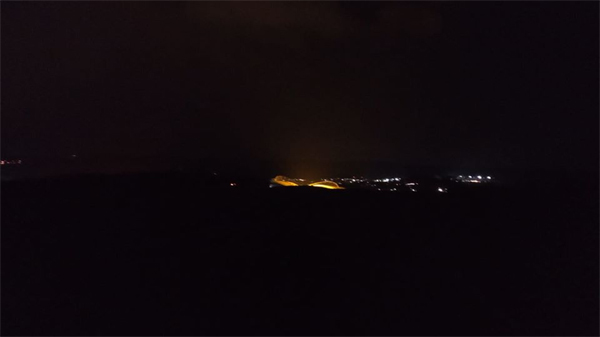
As you can see, the Amex is highly visible from here. It gives off a bright orange glow which lights up the night sky. And yes, if you were a bird or an insect in the Falmer area, then you’d probably be bloody confused about the levels of ‘sunlight’.
We’re no budding David Attenboroughs at WeAreBrighton.com – in fact, we slept through his appearance at Glastonbury with a terrible Strawberry Cider hangover – so we’ll have to take it from Mr Geliot that the light pollution is having a devastating impact on wildlife.
But the Amex isn’t the only contributor to lighting up the night sky. On the right of the photo, you can very clearly see the floodlights from the University of Sussex’s 3G pitch.
There is also a lot of light pollution coming from the university’s campus. Unless university has changed markedly from our student days, no lectures take place at 9.30pm at night, so why the need for so much light?
Unless of course all the buildings in questions are halls of residence. If that’s the case and students are signing the petition condemning the Amex Stadium for its light pollution, perhaps they should be looking a little closer to home?
Our second vantage point was from the top of Ditchling Beacon, one of the most popular views in Sussex. Albion fans of a certain vintage may remember Martin Perry insisting in planning meeting after planning meeting that Brighton’s newly constructed home would not be visible from Ditchling Beacon, as opponents to the stadium vehemently claimed.
It was one of the few things in the whole planning process that Mr Perry either got wrong or bent the truth about. Nobody really cares during sunlight hours though – if anything, the Amex adds to the skyline, a stunning piece of architecture between the green of the Downs and the blue of the sea.
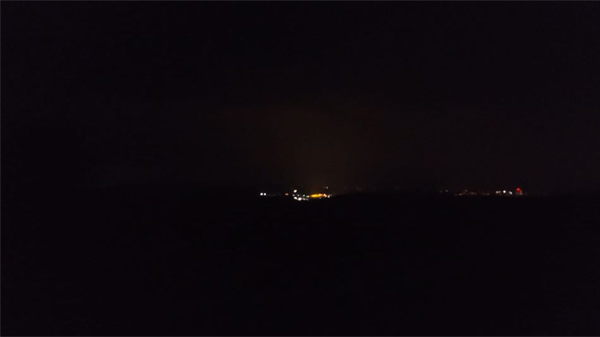
At night though, it’s a different story with the Amex very clearly visible from the top of Ditchling Beacon. Once again, you can still see lights from one of the university campuses although admittedly from a distance of about five miles away, it’s the stadium which is lighting up the sky.
You might have noticed some red lights to the right. We think they might be the cranes which are being used to rebuild the Royal Sussex, but we’re not entirely sure.
Whatever they are, they haven’t caught the wrath of Mr Geliot yet – probably because it would take a brave man to complain about much-needed state-of-the-art facilities being built at an NHS hospital.
Amex Stadium Light Pollution onsite
Get up close and personal with the Amex after dark and you can perhaps understand why Mr Geliot believes the club should be doing more to curb their contribution to light pollution.
If you stand outside the stadium, you can very clearly see the impact of the on-pitch lights and heaters. Should you decide to camp outside until morning, then it probably would keep you awake.
And if for whatever reason you decided that the perfect place to carry out some night time photography or do a little bit of stargazing was next to a 30,000 seat Premier League stadium, then it’s likely that you might find your favourite pastime being prevented. As would be the case at virtually every other Premier League club who use the technology.
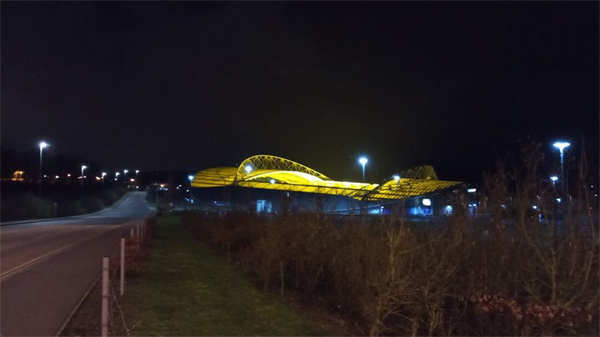
The uncomfortable truth for the Albion is that the Amex Stadium is contributing to light pollution in Sussex. The uncomfortable truth for Mr Geliot is that he appears to be exaggerating the fact to an extreme degree.
The photo which looks to have been edited to make it look like it’s been taken on Mars. The claims of well being being disrupted, human health being impacted and people not being able to get to sleep – it all looks rather far-fetched from what we found.
Is the story of Amex Stadium light pollution a real problem or fake news? It’s probably somewhere in the middle, with Mr Geliot’s desperation to portray the Amex as the devil actually doing more harm to his admirable environmentalism than good.
As we said right at the start, when you’ve got six lanes of major trunk road, two massive university campuses, a gymnasium, two floodlit 3G football pitches and the HQ of one of the country’s largest water companies all within a square mile of each other, it seems churlish to pick on the Albion as being the sole problem.
